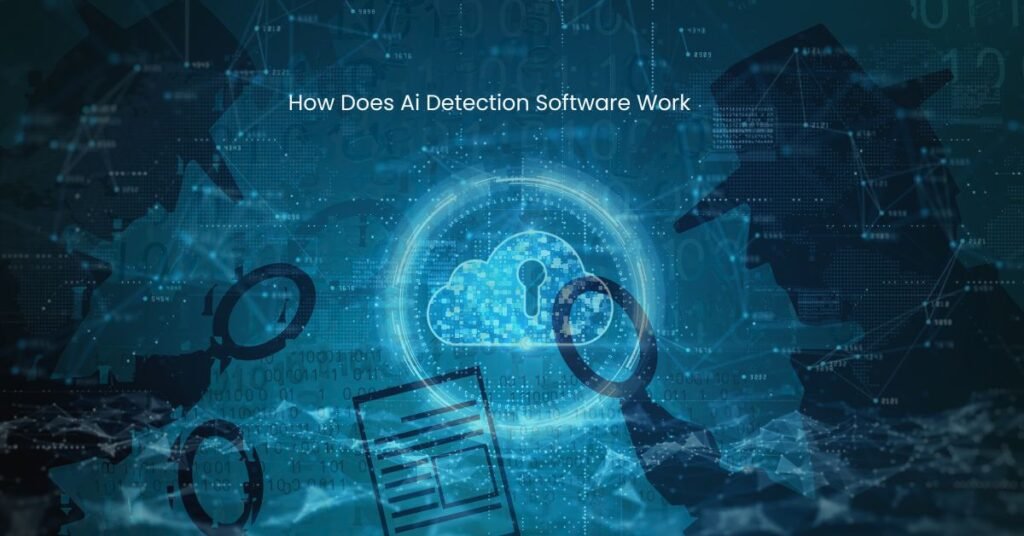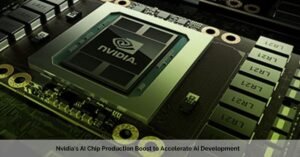
July 1, 2024

In the ever-evolving digital landscape, AI (Artificial Intelligence) is rapidly transforming various industries. From content creation to content consumption, AI’s influence is undeniable.
However, alongside the benefits of AI-generated content, concerns regarding authenticity and plagiarism have emerged.
This is where AI detection software comes into play.
What is AI Detection Software?
AI detection software, also known as AI content detection or AI writing detection, utilizes machine learning algorithms to identify content potentially generated by AI writing tools.
These AI classifiers are trained on massive amounts of data, allowing them to recognize patterns and characteristics indicative of AI-written text.
How Does AI Detection Software Work?
The inner workings of AI detection software can be broken down into several key stages:
What are Some of the Challenges of AI Detection Software?
As with any evolving technology, AI detection software faces certain challenges. One challenge is the continuous development of AI writing tools themselves.
As these AI writers become more sophisticated, they may be able to generate content that mimics human writing styles more convincingly, potentially outsmarting current detection methods.
Another challenge is the subjective nature of human language. Nuances, humor, and sarcasm can be difficult for AI to grasp, and detection software might misinterpret such elements as signs of AI generation.
The accuracy of AI content detectors is a complex issue, and it’s important to understand the limitations while acknowledging their usefulness. Here’s a breakdown:
Accuracy Range:
Factors Affecting Accuracy:
Using Detectors Effectively:
The Future of Detection:
Overall:
AI content detectors are a valuable tool, but they should be used with awareness of their limitations. By combining them with human judgment and editorial oversight, we can ensure the authenticity and quality of online content.
Two key technologies power the inner workings of AI content detection software:
Machine Learning (ML): This is the engine that drives AI detection. ML algorithms, like Support Vector Machines (SVMs) or Neural Networks, are the core of the software. Here’s how they work:
Training: These algorithms are trained on massive datasets of human-written and AI-generated text. The data acts as a learning ground, allowing the algorithms to identify patterns and characteristics that differentiate the two.
Feature Extraction: The ML algorithms analyze the text for specific features. These features can be statistical (sentence length, vocabulary richness) or stylistic (tone, formality). They can also involve semantic analysis, examining how logically connected the ideas are, to detect inconsistencies common in AI-written content.
Pattern Recognition: After ingesting the training data, the ML algorithms learn to identify patterns in the features that distinguish human and AI-generated content.
Classification: Once trained, the software can analyze new content. It compares the features of the new content to the patterns learned from the training data. Based on this comparison, the software assigns a score indicating the likelihood of the content being AI-generated.
Natural Language Processing (NLP): This field of AI focuses on how computers understand and manipulate human language. NLP techniques play a crucial role in AI content detection by:
Understanding Text Structure: NLP helps the software analyze the structure and flow of the text, identifying inconsistencies or unusual sentence patterns that might suggest AI generation.
Semantic Analysis: NLP allows the software to go beyond just the words themselves and delve into the meaning of the text. This can reveal issues like factual inconsistencies or a lack of coherence, which can be red flags for AI-written content.
Stylistic Analysis: NLP techniques can analyze the writing style of the text, looking for inconsistencies or repetitive patterns that might be indicative of AI generation.
By working together, Machine Learning and Natural Language Processing empower AI detection software to discern the subtle nuances between human-written and AI-generated content.
Feature | AI Detectors | Plagiarism Checkers |
Focus | Identify AI-generated content | Identify copied content |
Method | Analyze text for statistical patterns, stylistic elements, and semantic coherence | Compare text against databases of published content |
Application | Originality and authenticity (academic writing, professional content) | Academic integrity, citation practices, copyright avoidance |
Limitations | Accuracy varies, struggles with evolving AI and language nuances | May miss paraphrased content or non-indexed sources |
Used With | Plagiarism checkers for a comprehensive originality check | Human oversight for critical analysis |
AI detection software relies on a combination of techniques to identify content potentially generated by AI writing tools. Two key metrics play a crucial role in this process: perplexity and burstiness.
Perplexity: How Surprised is the AI?
Imagine a language model trained on a massive dataset of text. Perplexity measures how surprised this model is by a new piece of writing.
Burstiness: Variation is Key
While perplexity focuses on individual words and their predictability, burstiness looks at the bigger picture – sentence structure and variation.
Working Together: A Powerful Duo
Perplexity and burstiness are not used in isolation. AI detection software analyzes both metrics to create a more comprehensive picture of the text’s origin.
Limitations to Consider
While these metrics are valuable tools, it’s important to acknowledge their limitations:
Perplexity and burstiness are powerful tools in the arsenal of AI detection software. By analyzing these metrics alongside other techniques, these programs can help identify content potentially generated by AI writing tools. However, it’s crucial to remember that AI detection software is not foolproof. Human judgment and critical thinking are still essential when evaluating content and ensuring its authenticity.
The development of AI detection software is an ongoing process. As AI writing tools advance, so too will AI detection methods. Researchers are constantly exploring new techniques to improve accuracy and stay ahead of the curve.
AI detection software plays a crucial role in maintaining the integrity of online content. It helps to ensure that audiences are exposed to authentic human-generated content and empowers educators and content creators to identify potential plagiarism.
However, it’s important to remember that AI detection software is a tool, and like any tool, it should be used judiciously.
Human judgment and editorial oversight will always be essential in evaluating content and ensuring its quality.








@2023-2024-All Rights Reserved-JustAiTrends.com